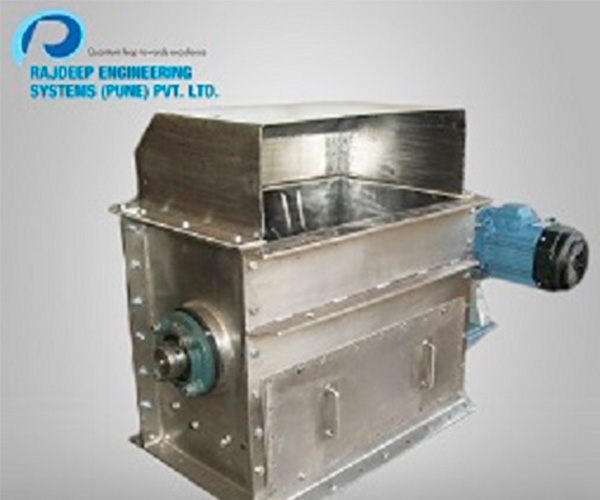- Home
- Company
- Industries
- Pharmaceutical Industries
- Food and Chemical Industries
- Agro industry
- Cement Industries
- Foundry Industry
- Petrochemical Industry
- Detergent Industry Insights: Sparking Innovation
- Steel & Non-Ferrous Industries
- Distillary & Brewery Industries
- Biscuit and Confectionary
- Fertilizer Industry
- Polymer Industries
- Systems
- Products
- Life At Rajdeep
- Contact Us
Lump Breakers

Lump breakers manufacturer
RAJDEEP specializes in manufacturing lump breakers tailored for dry powder de-agglomeration, addressing the need to reduce scrap products or process compacted, lumpy, and hard friable materials originating from Feed Hoppers, silos, bags, or bulk sacks. The hallmark of RAJDEEP’s Rotary Lump Breaker is its robust construction, offering heavy-duty performance while remaining effortlessly maintainable and trouble-free.
Engineered for cost-effective, rapid, in-line de-agglomeration of dry powders, this Rotary Lump Breaker is particularly suited for applications where high speed and high horsepower are not essential. Available in a variety of materials including carbon steel, SS304, and SS316 stainless steel, it also boasts a sanitary finish, ensuring compliance with stringent industry standards. With its versatile capabilities and durable design, RAJDEEP’s Rotary Lump Breaker stands as a reliable solution for the efficient processing of a wide range of materials in industrial settings.
Salient Features:
- Simple construction
- Easy to maintain and trouble free.
- Low investment and functioning costs
- MOC: MS, SS304, SS304 L, SS316, SS316L.
Applications:
- Fertilizer
- Paint & Pigment Handling
- Mineral Processing
- Chemicals
- Cement
- Petrochemicals
- Pharmaceutical
- Distillery / Brewery
- Food Industry
What is a Lump Breaker?
A Lump Breaker is a vital machine employed to precisely reduce or fragment materials into smaller, more manageable pieces through a combination of crushing, centrifugal force, and roller impact technologies. Found predominantly in industries such as food and chemical processing, these machines serve an indispensable role in transforming bulky materials into more manageable components. In essence, Lump Breakers act as the catalyst, effectively breaking down oversized food items and unwieldy chemical substances into smaller, more manageable particles, thereby facilitating smoother processing operations.
What does a Lump Breaker do?
As a tool for material processing, a Lump Breaker enhances efficiency and productivity in several ways:
- It transforms agglomerates into smaller particle sizes.
- The resulting finer pieces promote smoother material flow, preventing system jams and ensuring even distribution.
- Lump breakers contribute to maintaining the quality of processed products.
Why do I need a Lump Breaker?
The main duty of ideal lump breakers is to overcome the problem with materials that are difficult to flow, especially in pneumatic conveying systems. In situations like an environment where moisture is high, powders and chemicals will most likely have clumped together which eventually leads to the flow of manufacturing processes getting disturbed.
These devices are particularly essential for handling bulky materials in ingredient processing or managing materials susceptible to clumping, which could obstruct system flow or lead to uneven distributions.
Lump breakers come in various sizes to address different needs, typically available in dimensions like 12×12 and 24×24 inches, and are constructed from materials such as carbon steel or 304 or 316 stainless steel.
Lump Breakers versus Mills and other crushers
Lump breakers excel in handling powdery materials like cement, food, fertilizers, and solid chemicals prone to unwanted clumping due to moisture or humidity. Conversely, mills and other crushers specialize in processing solid substances such as logs or heavy metals.
To crush, pulverize, grind, or shatter hard solid materials, hammer mills are commonly used. They can efficiently break down abrasive products into uniform sizes. Additionally, machines like meat grinders, shredders, and other crushers have specific applications.
When determining the appropriate machinery for your needs, consider the following questions:
1. What type of material requires processing?
2. How hard, large, and abrasive is the material?
3. Is it susceptible to moisture absorption, clumping, or other quality changes?
Answering these questions accurately is crucial in selecting the suitable lump breaker or crusher for your pneumatic conveying system.
For expert guidance in choosing the right lump breaker, consulting with professionals ensures you acquire the correct components tailored to your requirements.
